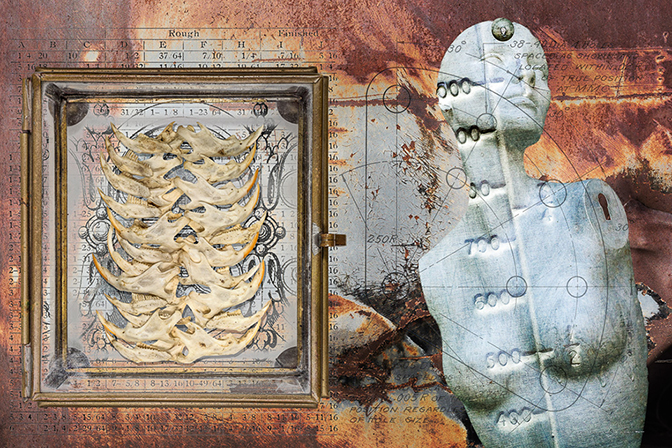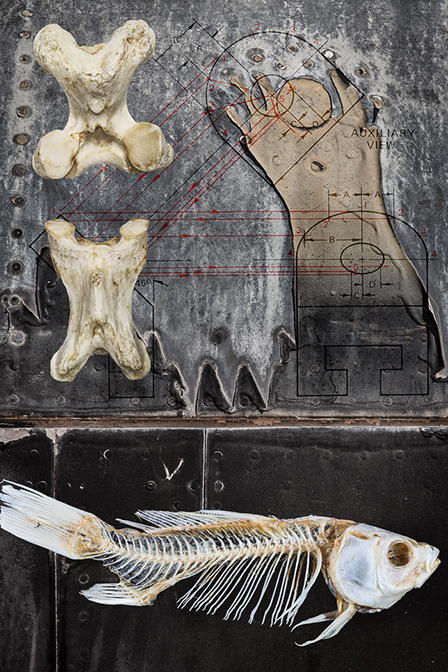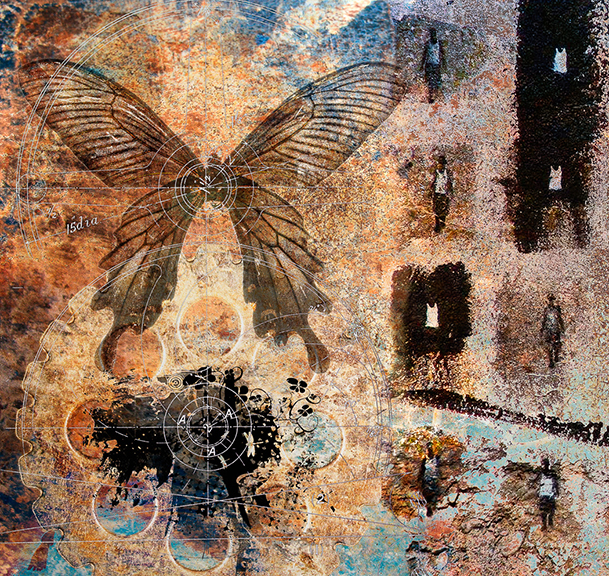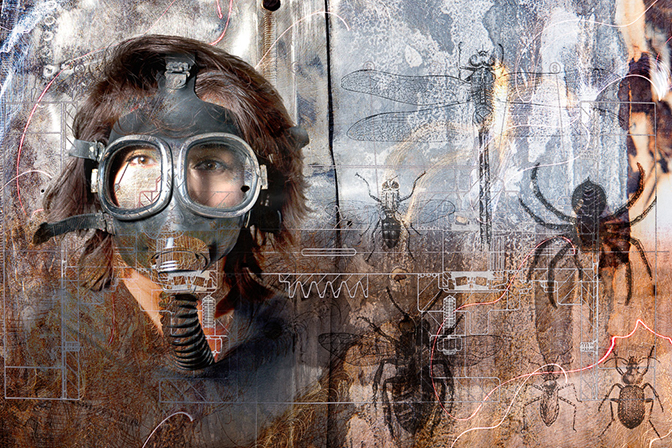PAUL SCHRANZ: Entropy
University of St. Francis Art Gallery
5 East Van Buren Street
Joliet, IL 60432
July 11 – August 25, 2016
Artist Lecture: Thursday, August 25, 1pm
Closing Reception: Thursday, August 25, 6-9pm

Paul Schranz, Ossuary, archival digital inkjet print, 2015
USF: How long have you been practicing art?
PS: I’ve been practicing art for 50 years and as a photographer, 49. I became fine arts major at the University of Illinois, but after realizing the medium I preferred, transferred and ultimately earned a BFA in photography at Ohio University, which at that time was one of the few universities to offer a degree in photography. I earned my MFA in photography from Northern Illinois University.

Paul Schranz, AMP, archival digital inkjet print, 2015
USF: In the past you’ve talked about how you’ve evolved from your roots as a California West Coast Photographer. Explain how your roots have influenced and/or directed your current body of work, Entropy.
PS: I began with an intense interest in analytical photography, heavily influenced by the vision and craft of the photographers of California’s West Coast. Over the years, I was fortunate to spend time with a number of the best known among these artists.
However, in the evolution of my own work, despite the unbelievable respect I had for analytical photography, I grew to find it repetitive and I grew tired of it. When I finally retired from teaching and moved from Illinois to New Mexico, I started to reframe my thought process from seeking images in the world outside my mind to creating the images that were in my mind.
One of my strongest influences was the West Coast photographer Wynn Bullock, who introduced me to the idea that we could photograph not only the present, but also the past and future. And while this can be accomplished through analytical means, I have grown to find synthetic composition originating from within my mind a much richer venue for my personal vision.

Paul Schranz, Attis, archival digital inkjet print, 2015
USF: As a photographer, I assume you are hyper-aware of ever changing technology. How has your work evolved with the advent of technology?
PS: With the exception of the rich history and aesthetics that influenced my early life as a photographer, the technology now available for contemporary photographic work has changed everything.
Let me paraphrase something Ansel Adams once said: Photography is an analytical art. He meant that photographers work in real time photographing real events, while synthetic arts, including painting, give an artist the opportunity to create what comes from the mind at any time. For the artist to physically be in a specific location during a specific season or at a specific time is not required.
Both analytic and synthetic processes have credence in my work. What digital technology has allowed me to do, unlike Anna Hoch and other early 20th century Dadaist artists, is to photograph in the analytic sense, then in my digital studio, go into my mind to work in the synthetic realm.

Paul Schranz, Empty Fictions, archival digital inkjet print, 2015
USF: Do you classify yourself as a photographer or a digital artist? Or something else?
PS: Alfred Stieglitz once said that isms drove him crazy. As I’ve grown older, titles have become less important to me. A gallery curator recently referred to me as a “photo designer.” I’m ok with that as much as anything else.
USF: Expand on your idea of the narrative and synthetic exploration as it relates to your work.
PS: My work is purely narrative. It carries with it very specific messages. Even the titles are carefully selected to fulfill the direction of the narrative. I understand that the titles are obscure to most people (they can be Googled!), but for me they have gnostic references and relate to the very real stresses of everyday life as we know it. The references are both ancient and contemporary

Paul Schranz, Heated by an Empty Spirit, archival digital inkjet print, 2015
USF: Your work appears in layers; sometimes layers of textures, other times layers of additional images. How does layering and employing your chosen method of creating your work (i.e., digital) have to do with the concept of entropy?
PS: Using layers enables me to bring in different, often diverse elements from different time periods into a single contemporary image. Among the elements in the Entropy series, I use mechanical drawings as metaphors of organized intellectual planning along with life forms, human, animal and plant. These are combined with elements of deterioration (the entropic process). I have found no better way to understand the beginning of a concept, the passage of time, and the effects of that process than working in collage.

Paul Schranz, What Has Survived, archival digital inkjet print, 2015
USF: You attribute the Gnostic Gospels as an eclectic influence in your work. Can you explain in greater detail how you use these gospels in your work?
PS: I’ve found religion, contemporary media, politics and corporate greed are the major influences of our society. I’ve found the Gnostic gospels, which are the ancient writings not included in traditionally accepted Biblical texts, to be far more inclusive, less judgmental and yield more to a vision of an elevated spirit. Many of the titles of the works in this series are references to these gnostic texts.
USF: What’s next?
PS: I’m working on a collage series that addresses the life situation that many people who consider themselves “damaged” face as a result of traumatic life experiences. These are those who may suffer from PTSD, those who see themselves outside of accepted societal “norms” because of their disability or diversity. The works will have image elements that include severely damaged dolls. I am still at the early image collection stage of the project and have not yet begun assemblage of the elements.
USF: You’ve been practicing art for over 4 decades. What advice can you offer students in their journey as artists?
PS: There are a thousand clichés that art students have heard for centuries.
In truth, art at its finest defines who we are as individuals, as people with purpose and meaning.
I don’t give advice. I listen and ask questions.
For additional information on the work of Paul Schranz and the University of ST. Francis Art Gallery, please visit:
Paul Schranz – http://paulschranz.com/
University of St. Francis Art Gallery – http://www.stfrancis.edu/academics/art-and-design/galleries/gallery-schedule/#.V3Kos5MrLUo
Exhibition and Artist Q&A organized by Jennifer Moore, Gallery Director


